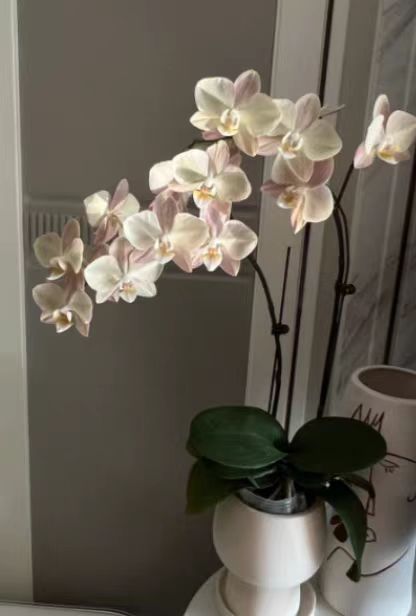During the cultivation and purchase of Phalaenopsis, flower enthusiasts often face a choice: should they buy a post-flowering seedling or a new seedling? Both types of seedlings have their own characteristics. A thorough understanding of their advantages and disadvantages can help us make a more suitable decision. At the same time, mastering the cultivation methods for post-flowering seedlings can also bring these "potential stocks" back to life.
A new seedling is like a blank sheet of paper, full of infinite possibilities. Its advantage lies in its young plant with strong vitality. Organs such as roots and leaves are in a brand-new and healthy state, and it has a relatively strong adaptability to the environment. During the subsequent growth process, as long as appropriate cultivation conditions are provided, the new seedling can grow leaves and develop roots rapidly according to the normal growth rhythm and gradually reach the flowering stage. Moreover, the new seedling can be managed according to the cultivation method set by oneself from the beginning, reducing the adaptation problems caused by different previous cultivation methods. However, it usually takes a long time for a new seedling to grow and flower, which may take 1 to 2 years or even longer. During this process, flower enthusiasts need to invest more patience and energy to take good care of it.
A post-flowering seedling is a plant that has already gone through the flowering stage. Its biggest advantage is that it is relatively more affordable than a new seedling, which is very attractive to flower enthusiasts with a limited budget. In addition, after one flowering, the post-flowering seedling is relatively stronger. As long as it is properly cultivated, it is likely to flower again in a relatively short time. However, there are also certain risks with post-flowering seedlings. Since a large amount of nutrients are consumed during flowering, some post-flowering seedlings may be in a relatively weak state. There may be problems such as aging and damage to the roots, or diseases and pests on the leaves. If not handled properly, the subsequent growth and re-flowering will be affected.
The primary task of cultivating post-flowering seedlings of Phalaenopsis is to promptly trim the remaining flowers. After the flowers wither, a disinfected pair of scissors should be used to cut off the remaining flowers and the flower stalk together from the base of the flower stalk. This can prevent the remaining flowers from continuing to consume nutrients and also reduce the possibility of the growth of diseases and pests.
After trimming, sufficient nutrient supplementation should be provided for the post-flowering seedlings. Since a large amount of nutrients are consumed during the flowering process, an appropriate amount of fertilizer needs to be applied at this time. A compound fertilizer containing various elements such as nitrogen, phosphorus, and potassium can be selected. Follow the principle of applying thin fertilizers frequently, and apply it once every 10 to 15 days to help the plant regain its vitality and promote the growth of new roots and leaves. After the plant grows stably, the proportion of phosphorus and potassium fertilizers can be appropriately increased to accumulate nutrients for the next flowering.
In terms of watering, Phalaenopsis likes a moist environment without waterlogging. During the recovery stage of post-flowering seedlings, watering should be carried out according to the dryness and wetness of the planting medium. Generally, when the surface of the planting medium is dry and turns white, water it thoroughly to ensure that the water can penetrate around the roots. At the same time, pay attention to maintaining a good ventilation environment to avoid the occurrence of diseases caused by high air humidity.
In addition, suitable light and temperature are also the keys to the cultivation of post-flowering seedlings. Phalaenopsis likes scattered light and should avoid direct strong light. It can be placed on a windowsill or an indoor location with bright scattered light. In terms of temperature, it is most suitable to keep it between 15 and 30°C. Too high or too low a temperature will affect the normal growth of the plant.
Both post-flowering seedlings and new seedlings of Phalaenopsis have their own merits. As long as post-flowering seedlings are scientifically and reasonably cultivated, they can also bloom beautifully. As long as the correct cultivation methods are mastered, both post-flowering seedlings and new seedlings can bloom under our careful care.
Which is better, a post-flowering seedling or a new seedling of Phalaenopsis?

Share with
Tagged in :




Leave a Reply